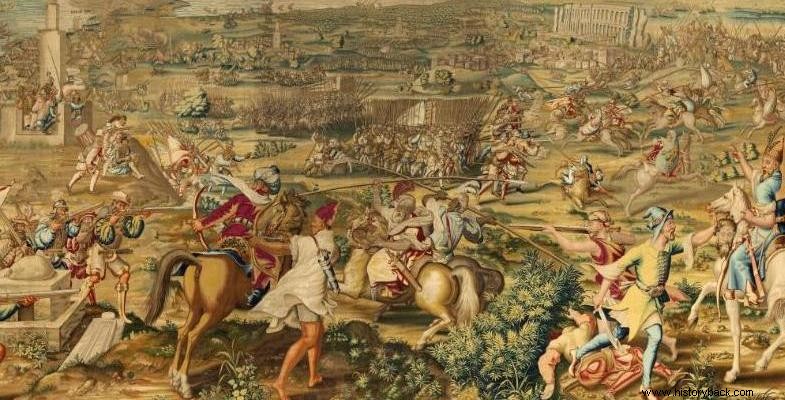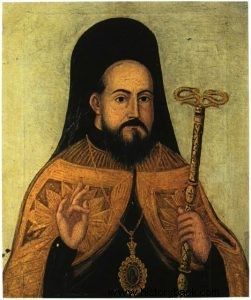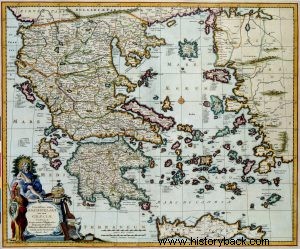
In 1596, as the Austrian-Turkish war was raging, the Greek archbishop of Achrid Athanasios planned the revolt of the Greeks in the area of his jurisdiction. Revolutionary ferments, centered on the Greek Himara, were underway as early as the 1570s through two Greek lords, Manthos Papagiannis and Panos Stolikos.
Athanasios (Rizeas) was born in Mani in 1560. A revolutionary spirit had conceived a wider plan against the Ottomans. The planned rebellion was part of a wider plan that envisioned a revolution of all Christians in the Balkans.
So Athanasios got in touch with the Venetian Prophet of Corfu asking for the help of Venice as well. But the Venetians rejected the plan and so Athanasios turned to the Spanish Viceroy of Naples asking him for arms and the dispatch of 4,000 soldiers.
Chimera
He also went to Rome asking for the help of the pope. However, not accepting the Pope's Unitarian conditions, he did not receive what was expected. In the meantime, the Spanish viceroy decided to send an officer to the area to be immediately informed about the situation.
However, the arrival of the Spanish officer was the trigger for the explosion of the revolution of the enslaved Himariotes under the archbishop Athanasios. The rebels were initially successful. They were even reinforced with a few Spaniards – about 100. However, they were defeated when they tried to capture the Turkish-held fortress of Cerna , although they had almost managed to figure it out.
This failure put an end to the rebellion. Athanasios then fled to Heimara where he met with the chieftains Michael Boua, Yiannis Golemi and Michael Papadas with the aim of continuing the revolution. However, this move failed with a Venetian finger.
He then went to Italy again asking for support. He saw the pope again, even the Hapsburg Emperor Rudolf, but also the great Humanist Martin Crusius, while he reportedly traveled as far as Russia. Having failed, he returned to Ahrida. He did not move according to the movement of Dionysius the so-called "dog philosopher", as he realized that he had no hope of success.
The big plan
In 1612 he went to Neapolis again where he had, until 1615, contacts with the Spaniards now preparing a revolution in his birthplace of Mani. However, he soon presented a wider plan against the Ottomans that included the liberation of the Dardanelles, Lesbos, Lemnos, Tenedos, Milos and Crete, the sending of a powerful Christian fleet to the Aegean and arson in Constantinople to cause confusion. strong>
Athanasios in 1615 went to Mani where he died. So his grandiose, anyway, plans remained plans. Athanasios was a visionary, a man of great education and strong will who had the misfortune to act in an age that did not favor his vision.


